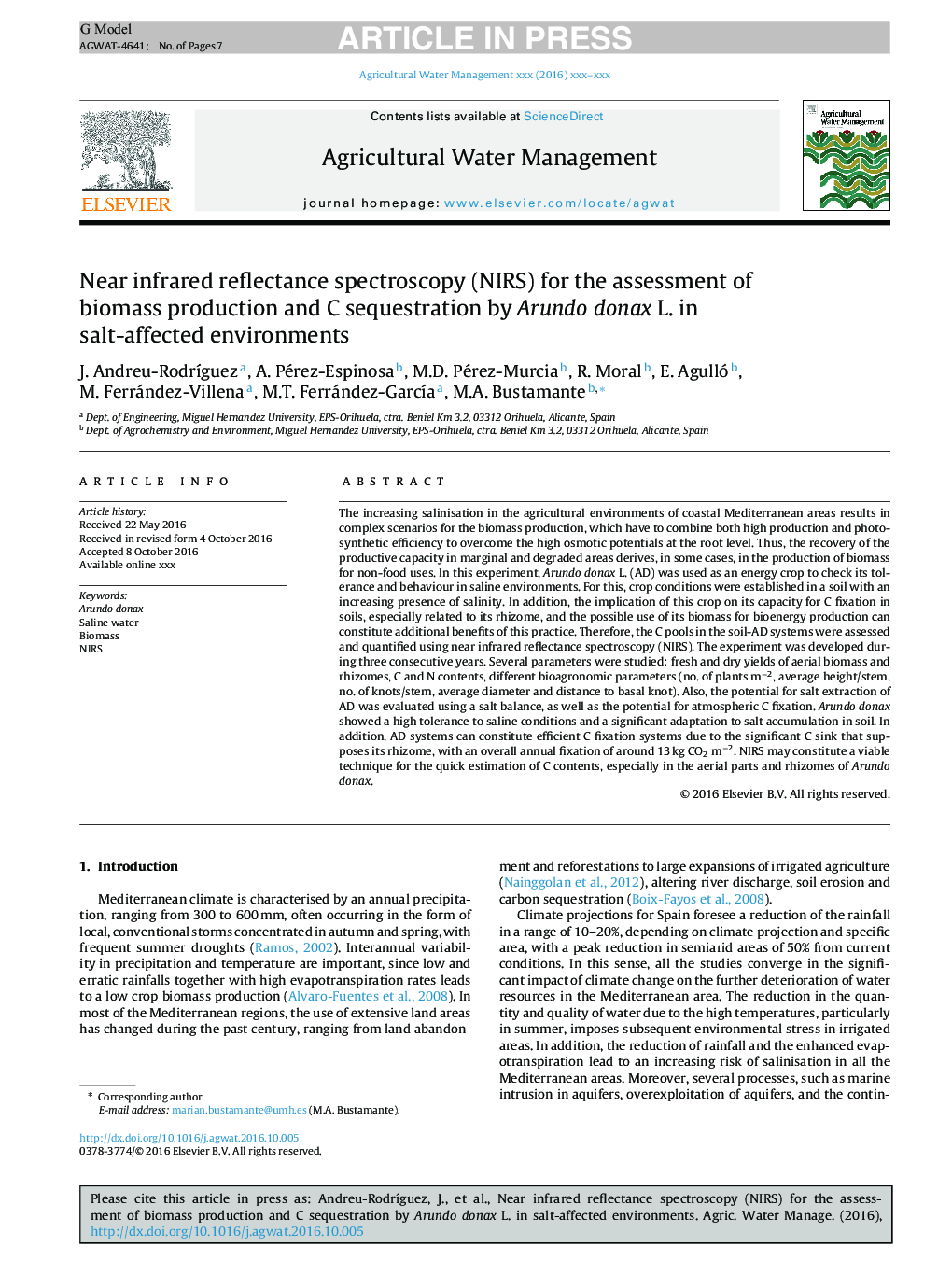| کد مقاله | کد نشریه | سال انتشار | مقاله انگلیسی | نسخه تمام متن |
|---|---|---|---|---|
| 5758363 | 1622897 | 2017 | 7 صفحه PDF | دانلود رایگان |
عنوان انگلیسی مقاله ISI
Near infrared reflectance spectroscopy (NIRS) for the assessment of biomass production and C sequestration by Arundo donax L. in salt-affected environments
دانلود مقاله + سفارش ترجمه
دانلود مقاله ISI انگلیسی
رایگان برای ایرانیان
موضوعات مرتبط
علوم زیستی و بیوفناوری
علوم کشاورزی و بیولوژیک
علوم زراعت و اصلاح نباتات
پیش نمایش صفحه اول مقاله

چکیده انگلیسی
The increasing salinisation in the agricultural environments of coastal Mediterranean areas results in complex scenarios for the biomass production, which have to combine both high production and photosynthetic efficiency to overcome the high osmotic potentials at the root level. Thus, the recovery of the productive capacity in marginal and degraded areas derives, in some cases, in the production of biomass for non-food uses. In this experiment, Arundo donax L. (AD) was used as an energy crop to check its tolerance and behaviour in saline environments. For this, crop conditions were established in a soil with an increasing presence of salinity. In addition, the implication of this crop on its capacity for C fixation in soils, especially related to its rhizome, and the possible use of its biomass for bioenergy production can constitute additional benefits of this practice. Therefore, the C pools in the soil-AD systems were assessed and quantified using near infrared reflectance spectroscopy (NIRS). The experiment was developed during three consecutive years. Several parameters were studied: fresh and dry yields of aerial biomass and rhizomes, C and N contents, different bioagronomic parameters (no. of plants mâ2, average height/stem, no. of knots/stem, average diameter and distance to basal knot). Also, the potential for salt extraction of AD was evaluated using a salt balance, as well as the potential for atmospheric C fixation. Arundo donax showed a high tolerance to saline conditions and a significant adaptation to salt accumulation in soil. In addition, AD systems can constitute efficient C fixation systems due to the significant C sink that supposes its rhizome, with an overall annual fixation of around 13Â kg CO2 mâ2. NIRS may constitute a viable technique for the quick estimation of C contents, especially in the aerial parts and rhizomes of Arundo donax.
ناشر
Database: Elsevier - ScienceDirect (ساینس دایرکت)
Journal: Agricultural Water Management - Volume 183, 31 March 2017, Pages 94-100
Journal: Agricultural Water Management - Volume 183, 31 March 2017, Pages 94-100
نویسندگان
J. Andreu-RodrÃguez, A. Pérez-Espinosa, M.D. Pérez-Murcia, R. Moral, E. Agulló, M. Ferrández-Villena, M.T. Ferrández-GarcÃa, M.A. Bustamante,